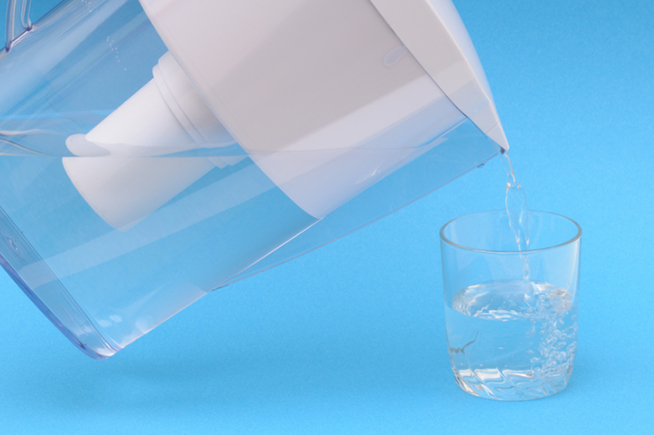What You Need To Know about Water Filters
By Claire Georgiou, Reboot Naturopath, B.HSc ND

Earth Day is right around the corner and it’s a good reminder that we need to conserve our water. It’s also a good reminder to make sure you are getting the most out of the water you drink, shower in and consume every day.
Tap water is quite a controversial topic; some people will defend the quality of tap water while others claim that the additives and other contaminants are negatively affecting our health.
Clean drinking tap water is a valuable resource but unfortunately due to environmental pollution, chemical contaminants are finding their way into our water supplies from municipal sewage, polluted runoff, agriculture, industrial pollution, chemicals, old eroding water pipes and more. Find out more about what you may be drinking when you consume tap water.
This is where water filters step in…
To choose the best water filter you must decide what you want to filter out, what filtering device to use, how much the different options cost and also the ongoing maintenance cost.
Some filters aim to produce clearer, better-tasting water, while others work to also remove the contaminants that could affect your health.
Some common methods of water filtration:
(Some filters use more than one kind of filtration technology)
Distillation – Boils the water then recondenses the purified steam, this requires electricity to operate, can leave a flat taste without important electrolytes such as magnesium and calcium. They can be countertop or whole house point-of-entry units. Gets rid of heavy metals such as cadmium, chromium, copper, lead, mercury and also arsenic, barium and fluoride.
Reverse Osmosis – A semi-permeable membrane separates impurities from water. This is considered the gold standard. This type of filtration method wastes a substantial amount of water. This is an under the sink unit. They can also be slow, and create 3-5 gallons (11-19Litres) of waste water for every 1 gallon (3.8L) filtered.
This type of filtration method removes most contaminants, such as parasites, heavy metals such as cadmium, copper, lead and mercury; and other pollutants, including arsenic, barium, nitrate/nitrite and perchlorate.
Activated Carbon filters – Highly absorbent carbon in the filter attracts and traps many impurities. Used in counter top and under the sink units as well as tap filters. This rids bad taste and odor including chlorine, and some that have certification (NSF Standard 53) will also remove other containments such as heavy metals, chloride by-products, lead, mercury, copper, parasites, pesticides, radon and other volatile organic chemicals.
Ceramic filters – Ceramic filters are made from porous ceramic material with the micron rating and quality dependent upon the manufacturer. Ceramic filters are either hollow in the middle as is the case with ceramic sediment filters or contain carbon filters. They filter anything that is larger than the ceramic pores such as 0.2-1micron which filters out anything larger such as micro-organisms. This filtration type does not remove chemical contaminants, however some will contain a high-performance activated carbon core inside the ceramic filter cartridge that reduces organic & metallic contaminants.
Ultra-Light Disinfection – UV light kills bacteria and other micro-organisms. Often under the sink units will remove micro-organisms such as Giardia and Cryptosporidium. This type of filtration needs very clear water to be effective. This does not remove chemical containments.
There are other types of water filtration available such as ion-exchange resin and activated alumina.
There are also different types of water filters, which from Consumer Reports have been rated the best for each category:
Carafe filters: These are less expensive and versatile. This will only be beneficial for 1 or 2 people due to the small amount of water it contains and purifies. These tend to be slow and have a shorter life-span. Best buys from consumer reports recommended Clear2O CWS100A, ZeroWater ZD-013 and ZeroWater ZP-010.
Tap filters: Easy to install but they don’t always fit on taps and they can be slow. Best buys from consumer reports Culligan FM-15A, Culligan FM-25, and Pur FM-3700B.
Bench-top filters: Easy to install and they don’t clog like jugs and the tap filters. They create clutter on bench tops. You can filter large amounts of water. Best buys from consumer reports: Amway eSpring 10-0188.
Under-the-sink filters: They usually need professional installation, can be expensive and will filter water at a faster rate. For the best consumer report recommendations: Multi-Pure MP750SB, Aqua-Pure by Cuno AP-DWS1000, Ecowater EPS 1000 and American Plumber WLCS-1000.
Reverse Osmosis: They remove a wide range of contaminants. Best buys from consumer reports: Coway P-07QL, Culligan Aqua-Cleer, Whirlpool WHER25, Kenmore 38156 and Kenmore Elite 38556.
Whole-house filters: This is an easy way to ensure the removal of contaminants from the point of entry of your house, so all taps coming into your house are filtered including the shower which is where you breathe in and absorb more chlorine through your skin than you do drinking 8 glasses of that same water. Unfortunately, there were no recommendations in the consumer report for whole house filters. However, this whole-house filtration system was highly recommended: The Polaris IV-F (with Fluoride reduction) whole house filtration system.
Download this report tor more detail on the best water filters from consumer reports.
Once you have an idea on the type of water filtration system you might like to purchase, you can have a look on the Water Quality Associated water treatment units with a standard of NSF/ANSI-53, (this is also listed on the NRDC site). The NSF International provides a range of certifications for products that involve initial and periodic testing.
Remember that no filter will give you good performance over the long term unless it receives regular maintenance. As contaminants build up, a filter will become less effective and make your water worse by releasing contaminants back into your filtered water.
What water filter do you use?